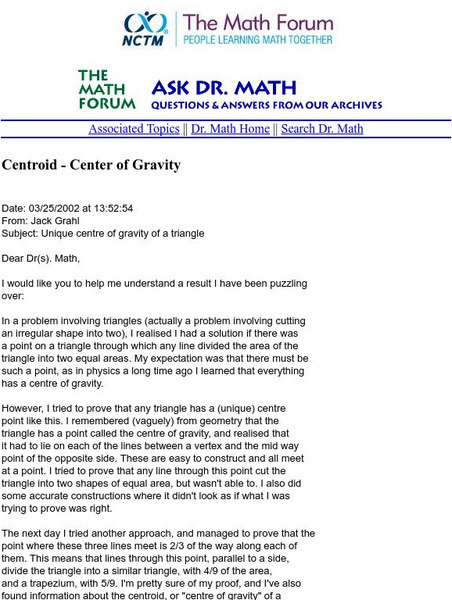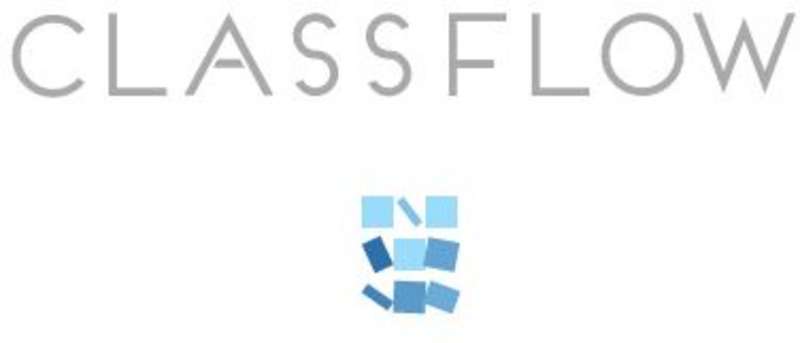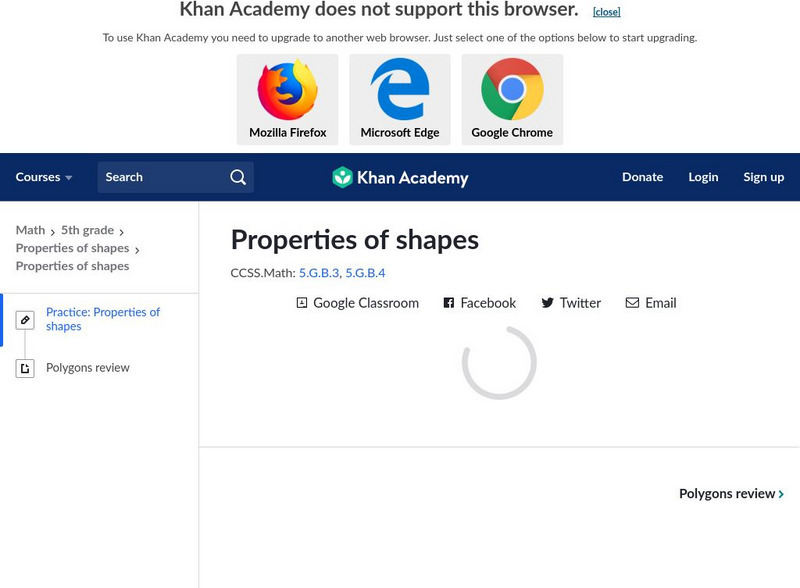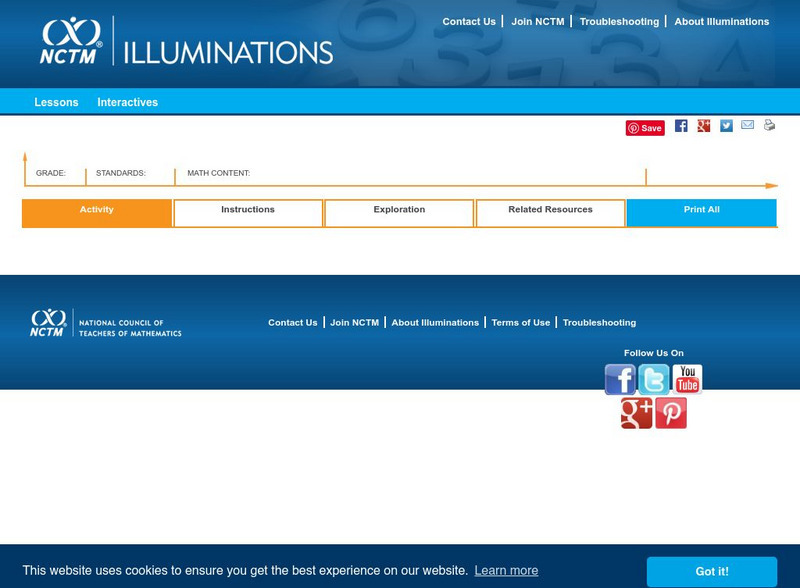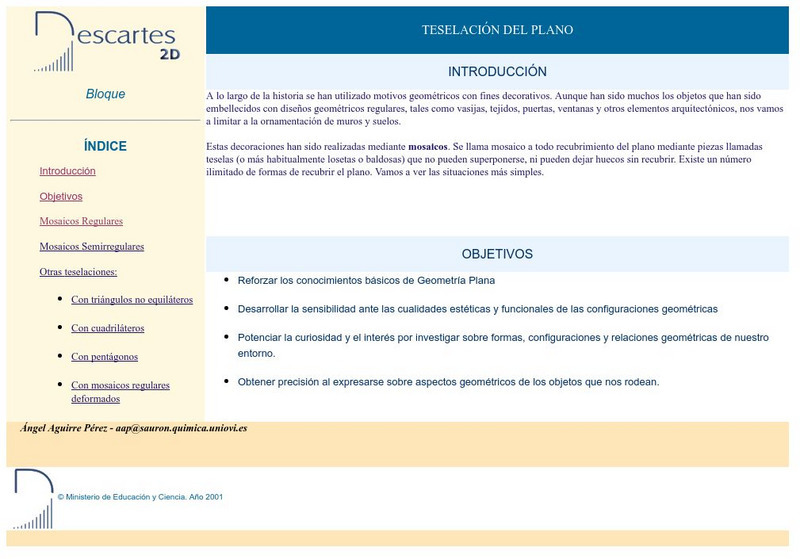Geometry Help
Geometry Help: Squares
Explains the basic concept of a square with step-by-step instructions and methods for solving specific problems on your own relating to this topic.
National Council of Teachers of Mathematics
The Math Forum: Ask Dr. Math: Centroid: Center of Gravity
At this site you will find am online discussion about the centroid of a triangle. The page begins with a discussion of observations leading to the centroid of a triangle. Dr. Math explains the correct findings as well as the errors made...
OER Commons
Oer Commons: Exploring Polygons
For this lesson, middle schoolers explore different polygons by drawing them, measuring angles, and manipulating interactive sketches to find the angle sum for any polygon. Students also explore the angle measures in regular polygons....
OER Commons
Oer Commons: Shape Characteristics
In this lesson, young scholars discuss what they know about shapes and their characteristics through a paper-folding activity that results in a parallelogram. Included are examples, discussion questions, and a reflection activity....
Homeschool Math
Homeschool Math: Basic Shapes
This review lesson about basic shapes (polygons)contains varied hands-on exercises and tilings about triangles, quadrilaterals, pentagons, and hexagons.
ClassFlow
Class Flow: Segments and Polygons
[Free Registration/Login Required] This flipchart reviews segments, parallel and perpendicular lines and then introduces polygons including quadrilaterals. It has many real world examples of shapes and includes Activote assessment.
NumberNut
Number Nut: Shapes, Symbols, and Colors: 2 D Shapes
Did you know that two-dimensional shapes are also called polygons? This lesson describes the various 2-D shapes and includes two interactive games to reinforce skills.
Wolfram Research
Wolfram Math World: Heron's Formula
This site provides a detailed overview of Heron's Formula. Content includes a definition, example, and formula.
Texas Instruments
Texas Instruments: Tessellations and Tile Patterns
Students understand that a tessellation is covering of a plane with a pattern of figures so there are no overlaps or gaps. They draw quadrilaterals and triangles and explore monohedral, dihedral, and trihedral tessellating patterns.
Math Is Fun
Math Is Fun: Interior Angles of Polygons
Learn what an interior angle of a polygon is and how you can calculate their value in triangles, quadrilaterals, and pentagons. Includes a chart that overviews the "general rule" for determining the sum of internal angles in any polygon...
Khan Academy
Khan Academy: Properties of Shapes
Identify and compare shapes based on their attributes. Shapes include triangle types, quadrilateral types, pentagons, and hexagons. Students receive immediate feedback and have the opportunity to try questions repeatedly, watch a video...
Better Lesson
Better Lesson: Identifying 2 D Shapes
In this activity, 2nd graders will identify shapes found around the room by recognizing their attributes such as number of angles, vertexes, and faces.
Geometry Help
Geometry Help: Rectangles
Explains the basic concept of a rectangle with step-by-step instructions and methods for solving specific problems on your own relating to this topic.
National Council of Teachers of Mathematics
Nctm: Illuminations: Angle Sums
Students may use this computer applet to explore angle sums of triangle, quadrilaterals, pentagons and hexagons.
AAA Math
Aaa Math: Geometry
A comprehensive tutorial from AAA Math that contains explanations, interactive practices and challenging games.
Primary Resources
Primary Resources: 2 D and 3 D Shapes
Here is a huge collection of teacher resources for teaching 2-D and 3-D shapes. Includes smartboard and PowerPoint presentations, as well as worksheets and helpful hints.
PBS
Pbs: Mathline: Tessellations Wow! [Pdf]
An integrated geometry instructional activity on spatial sense in which students identify and use different shapes to create a tessellation. "Through a variety of modalities such as writing, music, art, poetry, and literature, students...
Ministry of Education and Universities of the Region of Murcia (Spain)
Ministerio De Educacion Y Ciencia: Teselacion Del Plano
In Spanish. Gain your knowledge of tessellation with this interactive activity. Topics include identifying regular and semi-regular tessellations and figures that will tessellate. [Requires Java.]
The Math League
The Math League: Figures and Polygons
This website has basic definitions for most polygons, regular and irregular.
SMART Technologies
Smart: Polygons
This SMART Notebook lesson allows students to characteristics of polygons by exploring vocabulary and sample problems.
Math Aids
Math Aids: Geometry
Great resource to practice and strengthen math skills pertaining to Geometry. Math worksheets are printable, may be customized, and include answer keys.

